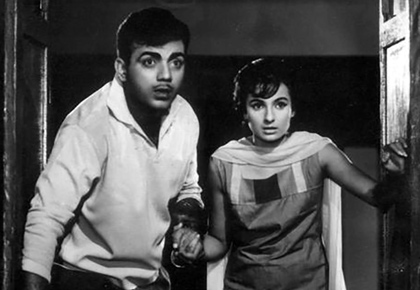 | « Back to article | Print this article |
Mehmood and R D Burman shiver, wail and flail when they encounter a stuffed tiger that wags its tail, furniture that moves on its own volition and dancing skeletons and mummies.
Dinesh Raheja revisits a must-watch.
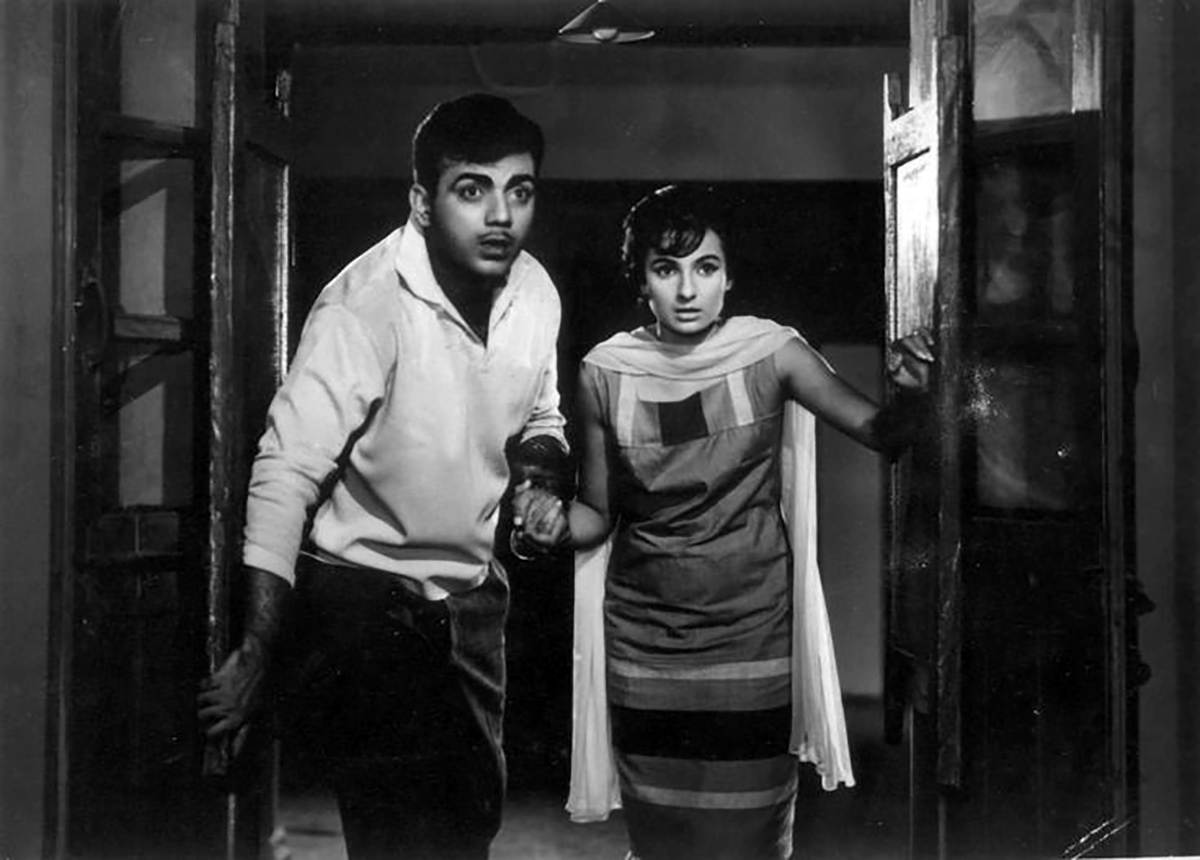
Horror comedies have proliferated in the Hindi cinema of the new millennium.
The genre picked up steam with Bhool Bhulaiyaa (2007) and Bhoothnath (2008) and has recently reached its zenith with the through-the-roof success of Stree 2.
But almost 60 years ago, popular comedian Mehmood pioneered this genre in India with the rollicking Bhoot Bungla (1965).
Earlier, films like Mahal (1949), Madhumati (1958), Bees Saal Baad (1962) and Woh Kaun Thi (1964) had popularised suspense with elements of horror.
Mehmood fused this category of films with dollops of his speciality -- comedy -- and created a merry mix in his directorial debut.
While not a comic classic like Padosan or Chalti Ka Naam Gaadi, Bhoot Bungla is engaging because of its gung-ho spirit of zany experimentation.
And it boasts of a howlarious comic cameo by the great music composer R D Burman in his youthful days.
Akshay Kumar recently announced that his next film would be Bhoot Bangla but as its director Priyadarshan says, "My film has nothing to do with that old Bhoot Bungla."
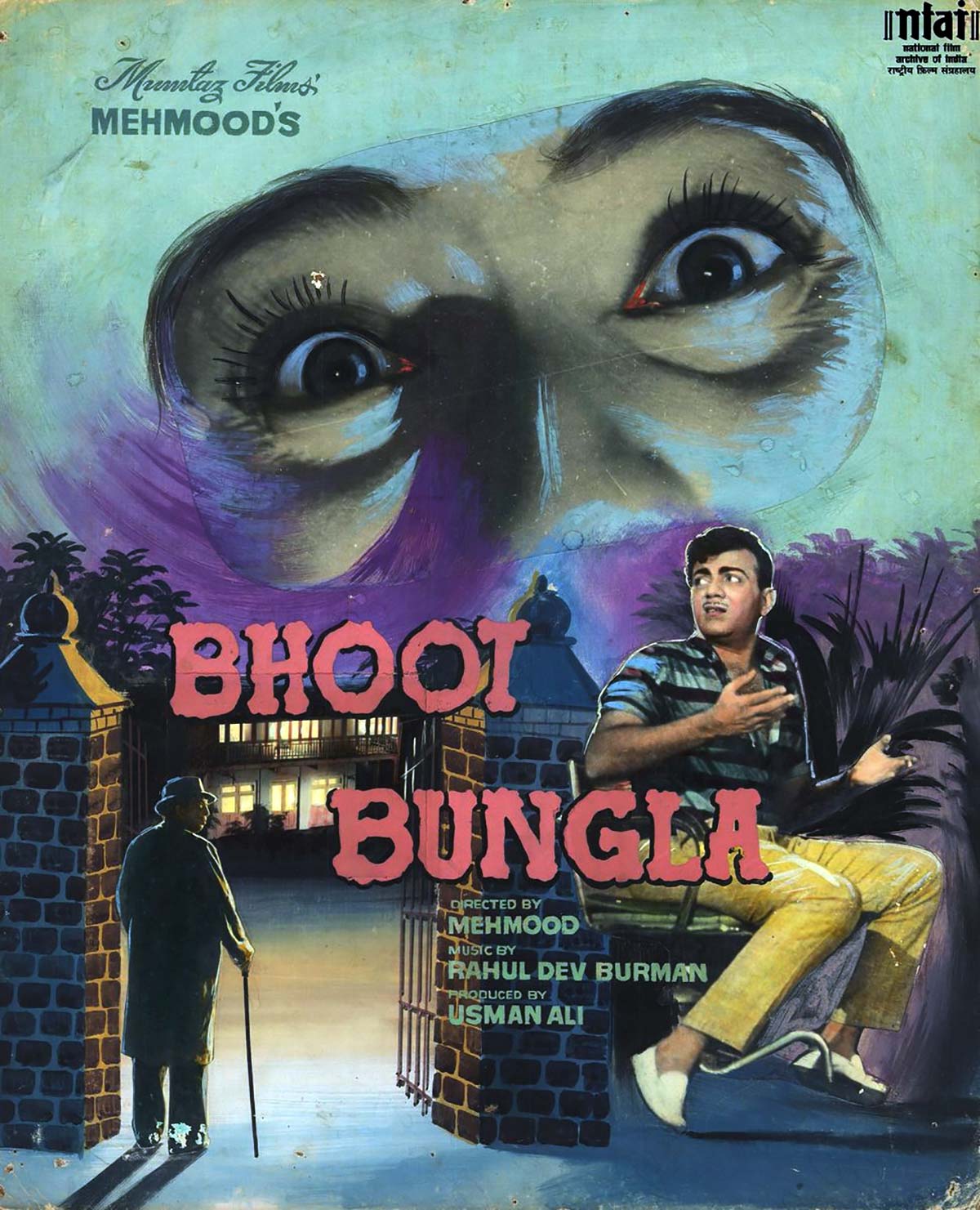
Alongside the opening credits (in which the letters are constructed from bones), Bhoot Bungla begins with a murder on a dark night in the titular bungalow.
Fifty years later, three middle-aged brothers reside in the same bungalow. The eldest's car gets blown up while driving to pick up his foreign-returned daughter Rekha (Tanuja) and the youngest, who is insane, is also found murdered soon thereafter.
The fearful surviving brother Shyam babu (Nazir Hussain) takes the traumatised Rekha and leaves the bungalow for the city.
But is Shyam Babu as nice and avuncular as he seems? Rekha start getting threatening phone calls and is pushed in the path of a bus.
On a visit to the bungalow with her friends, the horror element is ratchetted up and Rekha is terrified by a lamp which inexplicably extinguishes itself, doors that bang open and shut at will and an ominous warning from a ghostly fog.
Many a pulpy genre convention and trope finds a place in the film's story and treatment.
Humour enters the film with Mehmood as Mohan, who, at a club competition, beats Rekha's melodious song Aa Mere Pyar Aaja with his boisterous Aao Twist Karein.
Only Mehmood can pull off making Indian classical dance gestures in the middle of a western dance.
Expectedly, Mohan falls for Rekha. With the help of his do-gooder Youth Club, he resolves to help her and solve this mystery.
This leads to the two best sequences of the film.
In the first, Mohan dresses up as girl to scope out Shyam Babu's office for incriminating evidence.
Mehmood had earlier played a woman while dancing with Shammi Kapoor in Dhadakne Lagta Hai Mera Dil from Dil Tera Deewana. He even won Filmfare's Best Supporting Actor award for that film. Here, too, he is fully committed and hilarious while dressed for excess.
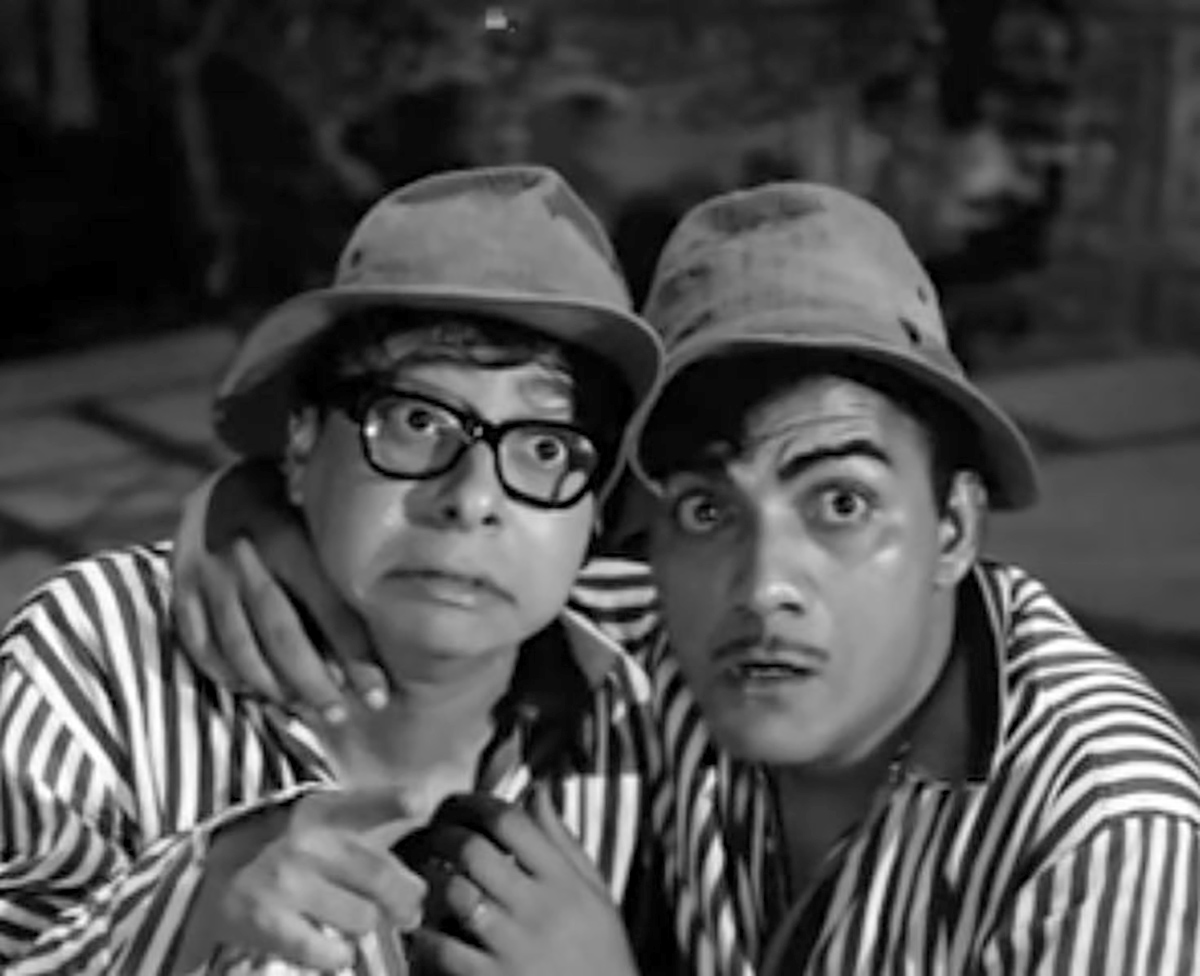
The second serio-comic sequence is lit up by the performance of R D Burman. Though no great histrionic talent, Burman is perfectly cast as the chubby-cheeked, bespectacled and befuddled Stocky who is a 'bewaqoof darpok' but accompanies Mohan to a midnight investigation of the bhoot bungalow.
Burman plays the comic foil to Mehmood's (relatively) straight-face, and his squeaky voice and scared expressions remind one of Jana from Stree 2.
The identically dressed Mehmood-Burman jodi also bring to mind Abbot and Costello as they create mayhem at the bhoot bungalow.
They shiver, wail and flail when they encounter a stuffed tiger that wags its tail, furniture that moves on its own volition and dancing skeletons and mummies.
Their antics go from the expected -- the classic backing up into each other and yelling -- to the zany surprise of seeing Burman pull out coffee and sandwiches from under his shirt and having a snack before making his escape.
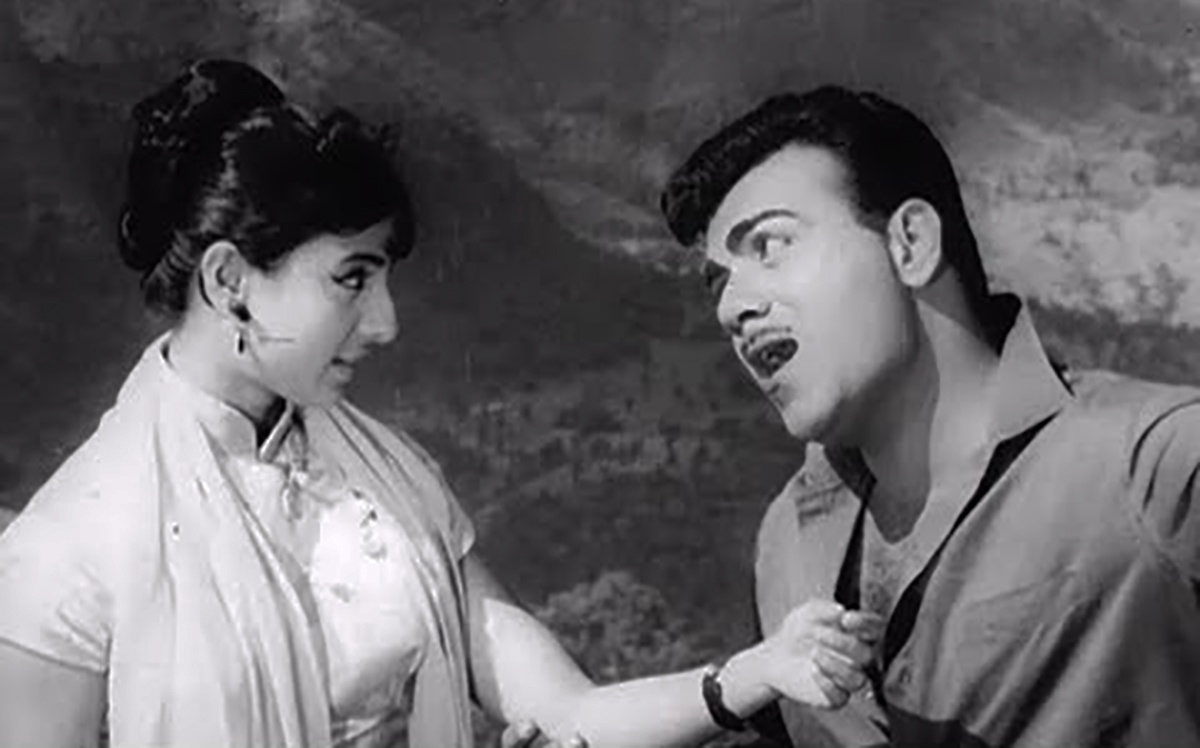
The tonal shifts between drama and comedy in Bhoot Bungla are far from seamless. Yet, it's largely fun and games till the denouement. Despite the many red herrings, you don't need to be Sherlock to have second guessed it.
Fortunately, not everything in the film is as overstated as the exaggerated sound effects and background score. After the cross-dressing scene, Mehmood is shown looking into a pocket mirror and pencilling an artificial moustache in the midst of mouthing an unrelated dialogue.
Contemporaneous western influence is evidenced in the staging of the song and dance numbers. Aao Twist Kare reflects the craze unleashed by the Chubby Checker song The Twist .
And the Youth Club members' fight scene with rivals is choreographed as dance moves and is reminiscent of the 1961 cinematic classic West Side Story.
Tanuja's role is entirely dramatic, wasting her comic potential, so it's up to the capable Mehmood to do the comic heavy lifting. As a director, he tries to ladle the horror in judicious balance with the humour, but most importantly treats both genres with the spirit of fun.
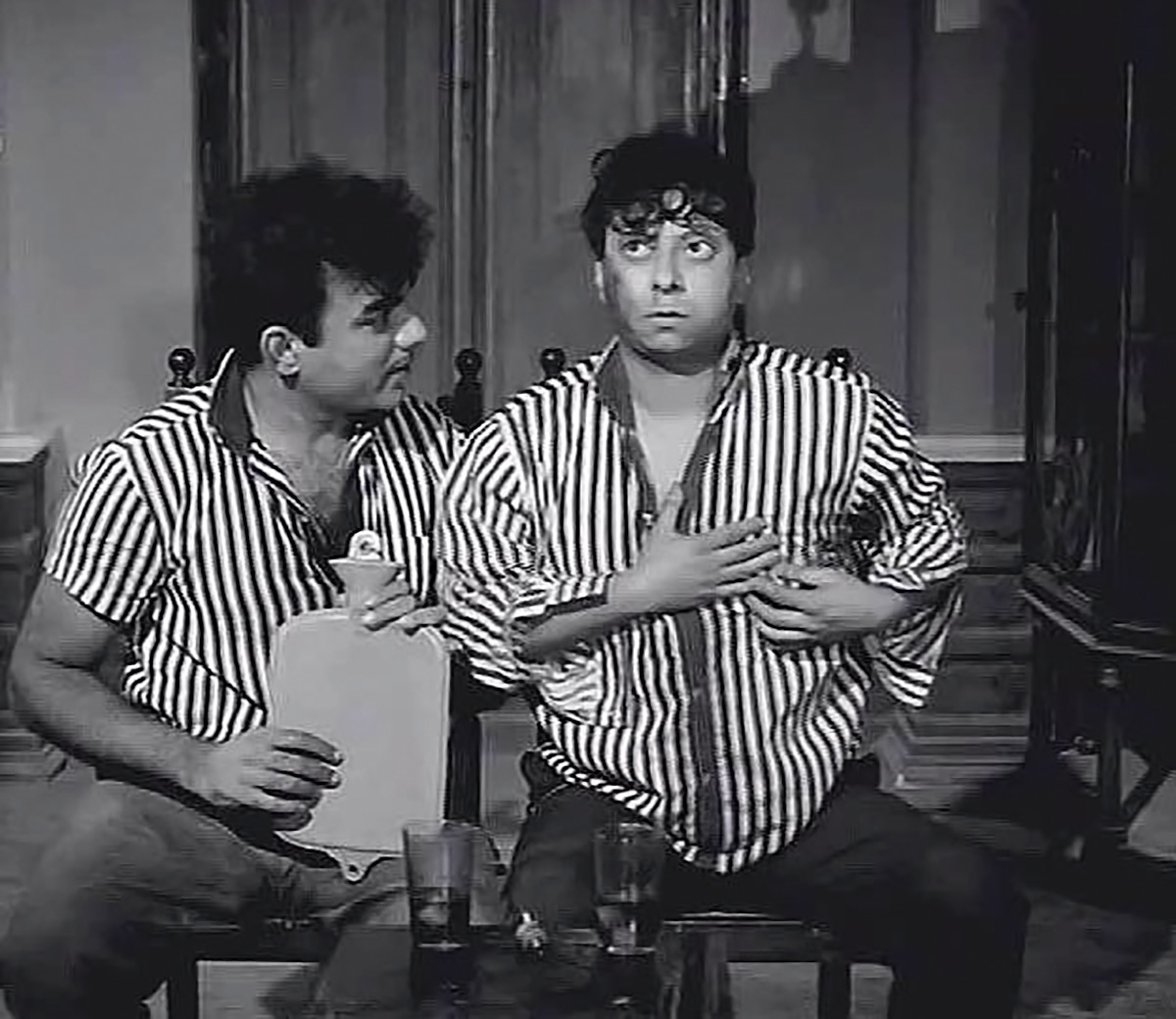
Sidelights
Mehmood had made the arduous climb from junior artiste to flop hero to the foremost comedian. But he yearned to play central roles and produced several showcases like Bhoot Bungla for his talents.
Tanuja, then 21, had been working in films for five years but hadn't scored a hit yet. Which is probably why she agreed to pair opposite Mehmood.
Akhtar-Ul-Iman, who penned the ever quotable lines of Waqt (also 1965), is credited as the dialogue writer here.
When Tanuja sees Mehmood drawing a line in the mud with a stick, she asks: 'Kya kar rahe ho?'
He quips: 'Line maar raha hoon.'
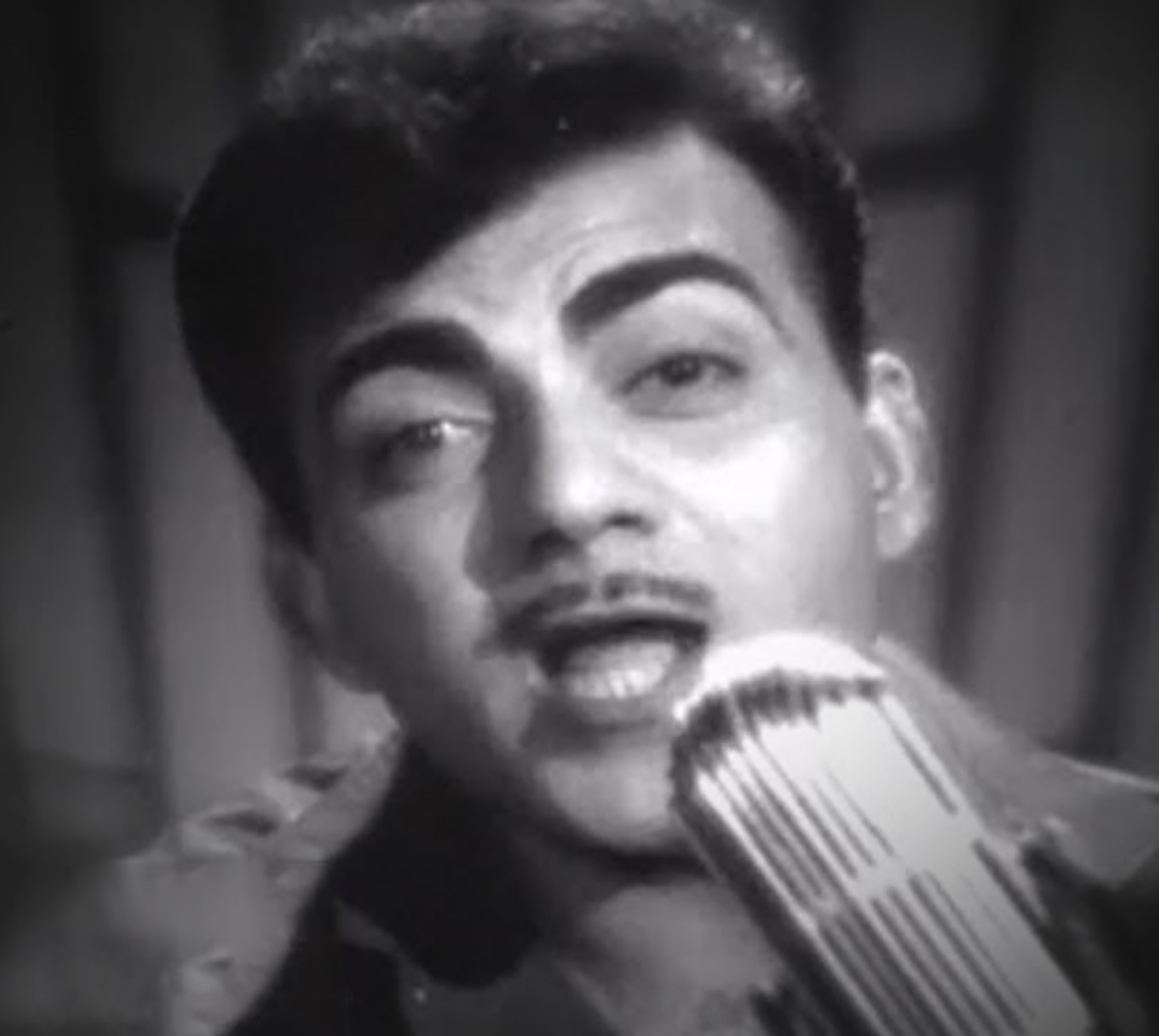
Music
R D Burman received no independent work offers for four long years after he made his debut as a composer with Mehmood's production Chhoti Nawab (1961).
It was Mehmood who placed a bet on him once again with Bhoot Bungla.
Soon thereafter, Burman signed Teesri Manzil and never looked back again.
Mehmood had jokingly complained that Burman would dent his car dashboard by drumming tunes on it with his fingers.
Manna Dey's robust rendition of the film's most popular song Aao Twist Karein consolidated his position as the playback singer closely associated with Mehmood. Kishore Kumar sang for Mehmood for the first time with Jaago Sonewalon.
